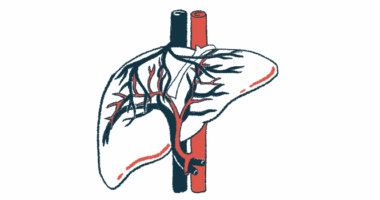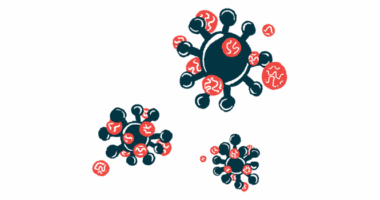Blood biomarkers may aid newborn cholestasis diagnosis: Study
Bile acid levels may distinguish between two causes

Measuring blood levels of bile acids, a component of bile, and the gamma-glutamyl transferase (GGT) enzyme may aid newborn cholestasis diagnosis by distinguishing between two of its causes: inborn errors of bile acid metabolism (IEBAM) and biliary atresia.
A study in Japan described two cases of IEBAM, a rare genetic condition that affects enzymes involved in the production of bile acids that, unlike biliary atresia, does not involve surgery as a diagnostic test.
It is essential to distinguish between these two conditions early on “to avoid unnecessary invasive procedures” and “ensure appropriate management,” the researchers wrote.
The study, “Navigating cholestasis: identifying inborn errors of bile acid metabolism for precision diagnosis,” was published in Frontiers in Pediatrics.
Cholestasis refers to slowed or stalled flow of bile, a digestive fluid, out of the liver, where it is produced, to the intestines. Impaired bile flow can damage the liver and result in bile leakage to the bloodstream, leading to symptoms like itching and jaundice (yellowing of the skin and whites of the eyes).
Diagnosis by surgery
The most common cause of newborn cholestasis is biliary atresia, a condition marked by blockage or absence of certain bile ducts inside and/or outside the liver. Cholangiogram, a type of surgery to analyze bile ducts and bile flow is the gold standard diagnostic test.
Inborn errors in bile acid metabolism, on the other hand, “accounts for approximately 2% of cases of cholestasis of unknown cause,” the researchers wrote.
IEBAM is characterized by enzyme deficiencies affecting the production of bile acids, resulting in the accumulation of unusual bile acids that are highly toxic to cells. This leads to liver cell damage and cholestasis.
So far, 12 IEBAM types, caused by mutations in different genes, have been reported. In at least four of them, “cholestatic liver injury develops between the neonatal and infancy periods, and it is thus essential to distinguish IEBAM from biliary atresia (BA), which requires surgical intervention” the researchers wrote.
Notably, blood levels of total bile acids and the liver enzyme GGT — both used as liver damage markers — are usually within the normal range in most IEBAM cases, but are higher than normal in biliary atresia.
Besides measuring these markers to distinguish between these two diseases, “analysis of urinary bile acids is needed to optimize diagnostic and therapeutic efficacy and avoid open cholangiography and initiate treatment,” the researchers wrote.
Two babies show value of testing
The researchers in Japan described the cases of two babies with cholestasis caused by IEBAM to highlight the characteristics of general blood analysis and bile acids profile in both blood and urine samples.
The first case was a 63-day-old boy with suspected biliary atresia due to prolonged jaundice. Initial blood work indicated elevated levels of direct bilirubin and the liver enzyme alanine aminotransferase, two markers of liver damage.
However, blood levels of total bile acids and GGT were normal. Biliary atresia was ruled out after open cholangiography at 74 days, and scientists suspected IEBAM.
Urine analyses indicated high levels of total bile acids but extremely low levels of primary bile acids, indicating a deficiency in the production of these molecules. Primary bile acids are those produced in the liver, which can be modified into secondary bile acids by bacteria in the intestines.
Genetic analysis revealed the boy had two mutations in the HSD3B7 gene, which encodes an enzyme involved in primary bile acid production, and he was diagnosed with an IEBAM type called HSD3B7 deficiency.
His cholestasis resolved with the oral administration of cholic acid, a primary bile acid, given at a dose of 10 mg/kg/day.
The second case was a 23-day-old boy with prolonged jaundice and pale stools. Results from blood tests were similar to the first case, except for total bile acids, which were elevated. Also, total bile acids were low in the urine, particularly compounds related to a secondary bile acid called ursodeoxycholic acid (UDCA).
Biliary atresia was also excluded after open cholangiography at 61 days of age. Researchers initially suspected of progressive familial intrahepatic cholestasis (PFIC), a group of rare genetic diseases marked by cholestasis in early childhood. However, the boy had no itching, inconsistent with PFIC.
Genetic tests identified two mutations in the BAAT gene, which provides instruction to produce an enzyme involved in molecular modifications of primary bile acids. The boy was diagnosed with BAAT deficiency, a type of IEBAM. He was successfully treated with oral UCDA (5 mg/kg/day).
“We highly recommend measuring [blood total bile acids] and GGT levels … in cases of unknown cholestasis when seeing a patient with disease of unknown cause, followed by urinary bile acid analysis at least once,” the team concluded.








